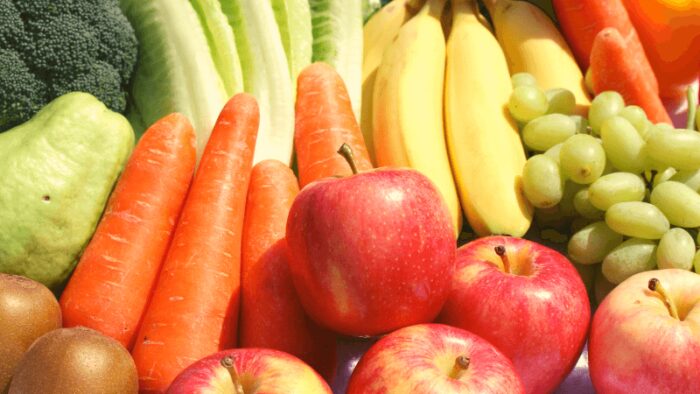Ready, Aim Fiber! (Novel Way to Lose Weight)
If you want to speed up your metabolism, feel full and cleanse your system, you must add fiber to your diet. It is time to make bring it into your diet if you really want to amplify your dieting efforts to lose weight.
Two Types of Fiber; Soluble and Insoluble

Soluble fiber dissolves in the digestive system while insoluble fiber passes through the system largely unchanged. Soluble fiber is found in oats, apples, citrus fruits and carrots while insoluble (or bulk forming) fibers are made up of grains like wheat bran.
It’s also often recommended to supplement with psyllium husk powder for bulking stool and improving digestive health.
Fiber Keeps You Regular.
As it passes through the digestive tract it acts as a sponge to absorb it weight in liquid, and the results are that your bowel movements are expelled more easily and rapidly.
As a high-protein eater, I must include food and veggies that are high in fiber every day, almost at every meal just to counteract the symptoms of constipation that can come from a high protein intake.
I also recommend eating high fiber foods the day after a cheat day, to eliminate some of the effects of sugar, fats and alcohol.
Bulking stool is important. According to the United States National Library of Medicine (NLM), “Regular bowel movements are essential for good health.
A daily bowel movement after a meal is an indication that food has moved from the stomach into the duodenum, which is where most nutrient absorption occurs.” The role of fiber in digestion could help with the issue of chronic constipation and with digestive regularity.
Most plants contain both types of fiber and act as a sweep for your system. To see results I suggest taking in 25-35 grams per day, which I am sure is nowhere near what you are taking in now.
SOLUBLE FIBER
- Legumes
- Oatmeal
- Apples
- Strawberries
- Citrus fruits
INSOLUBLE
- Wheat bran
- Whole wheat products
- Broccoli
- Skins of fruit
How Can Fiber Help You Lose Weight?
The important question is, can fiber help weight loss? Recent studies have shown that soluble fibers may help promote satiety and suppress appetite which means you might feel fuller after eating a meal containing soluble fiber than if you were to eat the same amount of calories from a meal without soluble fiber.
The United States Department of Agriculture (USDA) reviewed several studies that found an increase in satiety with various amounts of soluble fiber ranging from 3 grams to 10 grams per meal.
Furthermore, the USDA concluded, “that consumption of viscous dietary fibers could potentially promote weight loss or prevent weight gain.”
Eating Fiber Keeps You Full.
Since fiber takes longer to digest than many other foods, it keeps you feeling full and not feeling so hungry. Add fiber to every meal in the form of grain, or berries and veggies.
This will keep you satiated up until your next meal, sugar cravings will be a thing of the past. The idea of VOLUMETRICS in food works well with high fiber foods because most of them contain low calories in large amounts.
So it seems like you are eating a high volume of food but really they don’t have many calories.
Fiber Boosts Your Metabolism.
Remember that part of metabolism is how much energy is expended in digesting the food. Since fiber is harder to digest, it in turn expends more energy to get through your system.
So in that case when you add fiber to each meal, it takes even more energy to expend. Pick foods with highest grams of fiber per servings. My favorites are ALL Bran extra fiber cereal, buckwheat, blueberries, and spinach.
As far as fiber supplements, there are okay but why not just eat real food.
The good part of fiber rich foods is that they are also high in vitamins and antioxidants, something you will never get from a fiber supplement.
You can try food or juices or yogurts that have added fiber to them but not if they have extra sugar.
What Foods Are High In Fiber?
Foods that are high in fiber include whole grains, oats, legumes (dried beans and peas), vegetables, fruits, nuts, and seeds. Brown rice, wild rice, barley, quinoa, couscous, and oatmeal are also high in fiber. Some foods that are made from whole grains, such as bran cereals, contain a lot of dietary fiber.
How Much Fiber Per Day?
The recommended daily intake of dietary fiber for men is 38 grams per day and for women 25 grams per day – the amount in about 21/2 cups of raw broccoli or one cup each of cooked lentils and chickpeas.
The amount of soluble and insoluble fiber differs among the various foods that contain fiber, and this difference affects how your body digests and absorbs these fibers.
21 High Fiber Foods
The list below shows the amount of dietary fiber in some common foods:
- Oatmeal
- Bran cereal
- Lima beans
- Artichokes
- Raspberries
- Pearled barley
- Whole wheat bread
- Apple with skin
- White beans (cannellini)
- Quinoa (cooked)
- Potato with skin
- Broccoli
- Bananas
- Sweet corn
- Raisins
- Chickpeas
- Celery
- Pears
- Blackberries
- Chickpeas
- Artichoke
Finally, a word of warning, when you start incorporating fiber into your diet, start slow. If you are a fiber virgin, it will hurt at first, but eventually it will get easier and eventually you might even like it.
There will be discomfort and there will always be a little bloating but it will be gone by morning along with any toxins and extra weight. Eat up!
